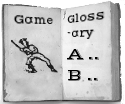The Union Hall Game of Ball
| Game | The Union Hall Game |
|---|---|
| Game Family | Baseball |
| Location | NY |
| Regions | US |
| Eras | Predecessor, 1800s |
| Invented | Yes |
| Tags | |
| Description | A game they evidently knew as "base ball" was played by the students of the Union Hall Academy in Brooklyn well before the New York game began its spread in the mid 1850s. Two students who played the game in the early 1850s exchanged letters about it in 1905, both of them early members of the Knickerbocker Club. (Excerpts are provided by John Thorn below.) The letters reveal
|
| Sources | |
| Source Image | [[Image:|left|thumb]] |
| Comment | Edit with form to add a comment |
| Query | Edit with form to add a query |
| Has Supplemental Text | Yes |
Comments
<comments voting="Plus" />
Supplemental Text
Email from John Thorn to Protoball, January 4, 2016:
In a letter to William S. Cogswell dated January 10, 1905, A. G. Mills, just beginning to accumulate data for his Commission’s report, wrote:
"Among the vivid recollections of my early life at Union Hall Academy
[where Knickerbocker William R. Wheaton had trained] is a game
of ball in which I played, where the boys of the side at bat were put
out by being hit with the ball. You made a splendid shot at me at
quite a long distance, and put me out fairly and squarely while [I was]
running from second base to home. My recollection is that we had a
first base near the batsman’s position; the second base was a tree at
some distance, and the third base was the home base, also near the
batsman’s position. This . . . at least, as I remember it, we played at
Union Hall Academy for some years."
To which Cogswell replied on January 19:
"My recollection of the game of base ball as we played for years at
Union Hall, say from 1849 to 1856, is quite clear. You are quite right
about the three bases, their location and the third base being home.
When there were few players there was a rule against screwing, i.e.,
making strikes that now would be called “foul.” We used flat bats, and
it was considered quite an art to be able to “screw” well, as that sent
the ball away from the bases."
Cogswell further supplied a précis of the game’s rules: a batsman is
out if the ball is caught on the fly or the bound, the ball must strike the
runner or touch him between bases to record an out, all must be retired
before the side is out, and three home runs by the last batter would
restore his side to the bat.
This New York game of three-cornered cat, whose players called it
baseball, had already been modified for adult players a decade earlier, as Wheaton would recollect in the San Francisco Examiner in 1887. The mention of foul territory, intuitively sound for occasions when there were too few players to cover a broad expanse, is of particular interest, as the only other early game that distinguished between fair and foul ground was likewise a modification of a game played in the round by full sides of eleven: cricket. That modification was single-wicket
cricket, which when played by fewer than five to the side rendered foul
those balls hit behind the wicket or beyond a sixty-six-foot distance on
either side of it.
